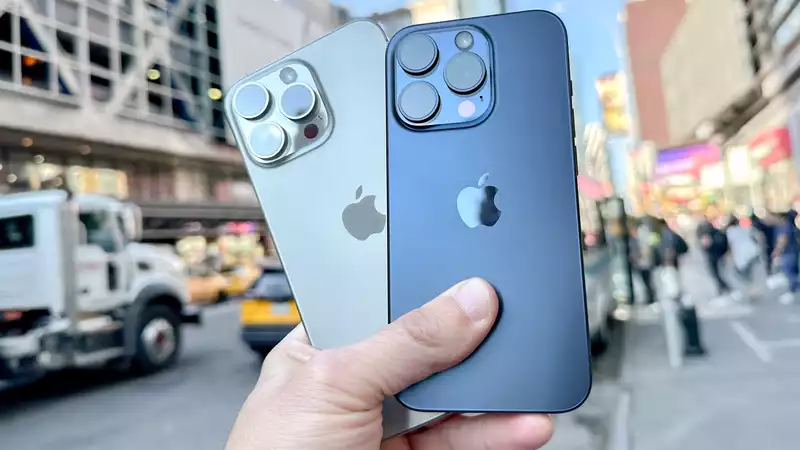Not long after the iPhone 15 hit store shelves, it seems to be heating up. Some users have reported that the iPhone 15 overheats after performing simple tasks such as browsing social media feeds or watching videos for a short period of time. This problem appears to be occurring with the iPhone 15 Pro model as well as the standard iPhone 15 series.
We do not yet know how widespread this problem is, as we do not want it to happen right after Apple announces a new iPhone. Still, this is not the first time the iPhone has encountered this type of problem.
What is interesting from these various reports of iPhone 15 heat generation is trying to determine what is actually causing this problem. Thermal images showing hot spots on the phone point to several different culprits, including the A17 Pro chip, the titanium alloy frame, and the new USB-C port that Apple has chosen to use in place of the Lightning port.
On September 30, Apple released a response identifying the cause of the overheating problem. The issue can be traced back to several software-related situations, including certain third-party app updates and bugs in iOS 17, which will be addressed in a future update.
Apple claims that the overheating issue is not related to the hardware of the device, but rather to three different software-related conditions.
For starters, the devices may "feel warm for the first few days after device setup or restoration due to increased background activity," Apple told MacRumors. This is pretty standard advice for any cell phone. When setting up a new device for the first time, it will likely be updating settings, downloading updates, and doing other tasks in the background.
Apple also identified a bug in iOS 17 that affects some users that will be addressed in a software update. The company emphasized to Forbes that this is not a euphemism for squeezing performance to lower temperatures.
Finally, there are several third-party updates that are causing the update to "overload the system," including Uber, Asphalt 9, and Instagram. Apple said it is "working with these app developers on fixes that are currently being rolled out."
One report suggests another culprit: the new A17 Pro chip that powers the iPhone 15 Pro and 15 Pro Max. While we did not experience any overheating issues during the course of our review, Chinese tech blogger Geekerwan said the iPhone 15 Pro reached a peak level of 118°F at surface temperature, setting a new record.
It is almost understood that cell phone processors work harder in demanding tasks, so it is not surprising that the A17 Pro is contradicted. However, the overheating issue also extends to the iPhone 15 series with the A16 Bionic. According to other iPhone 15 owners, overheating occurs when charging using the new USB-C port. While heat generation during charging occurs naturally, the heat is amplified when the iPhone is in active use.
Nonetheless, such extreme temperatures are concerning, especially when they occur during mundane operations. In a statement addressing reports of overheating, Apple claimed that the problem is not hardware-related, but rather associated with software-related conditions.
Apple analyst Ming-Chi Kuo believes the problem is related to a compromise in the design of the iPhone 15 Pro series' heat dissipation system. The titanium alloy frame makes the iPhone 15 Pro series much lighter than its predecessor, but it also appears to be the result of "compromises in thermal system design."
Kuo believes that the reduced heat dissipation area, coupled with the iPhone 15 Pro's new titanium frame, has reduced the phone's thermal efficiency. This combination is probably the main culprit for the iPhone 15 Pro series, but certainly not for the standard iPhone 15 and 15 Plus.
Aside from what is causing the overheating issues, it will be clear if a software update like the one Apple has promised for iOS 17 will be released to fix these issues, and perhaps throttle down the processor. It will be interesting to see if it will. And perhaps it will also be clear if the processors will be throttled down. Several factors are at play here, so we will have to wait and see what Apple does.
.









Comments